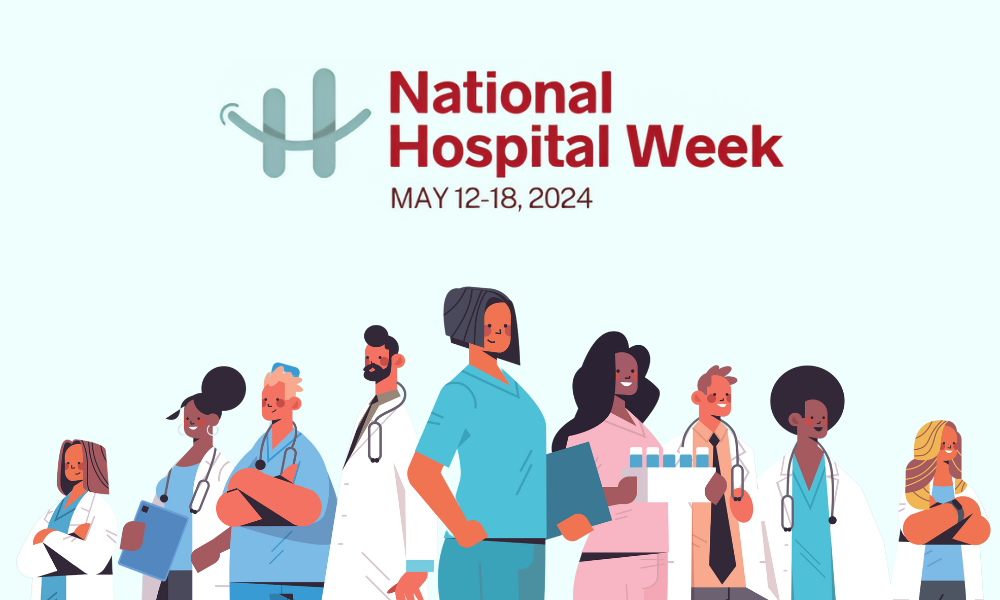Happy National CRNA Week, (1/23-29)!
10 Reasons to Become a Locum Tenens CRNA
(Based on article by Editorial Staff @NursingProcess.org)
Choosing an advanced nursing track can be daunting with so many rewarding options available. However, one career path that seems to set itself apart is nursing anesthesia. Certified Registered Nurse Anesthetists (CRNAs) enjoy flexibility, autonomy and generous compensation, along with many other advantages.
Read below to learn 10 reasons to consider becoming a nurse anesthetist.
1. Plenty of Job Opportunities
Physician and advanced practitioner staffing firm Merritt Hawkins cites US Bureau of Labor Statistics projections of job growth for advanced practice nurses—including CRNAs, midwives and nurse practitioners—at 26% between 2018 to 2028.
Why the projected double-digit job growth? Possibly because there are fewer than 60,000 CRNAs in the US today, compared to roughly 4 million registered nurses, and more than 325,000 nurse practitioners.
It’s difficult to find data on how many CRNAs work locum tenens, but at least one locum tenens agency has boasted online about working with more than 5,000 CRNAs.
2. Flexible Schedules
Ample opportunity means CRNAs can choose a schedule that fits their needs. There are options for working full-time, part-time, as needed, on call, or even overnight. This flexibility is great for finding the optimal work-life balance.
Flexibility also is one of the primary reasons thousands of physicians and other advanced practice clinicians choose to work on a locum tenens basis: You can select the location, practice setting, timing, duration, and (to some extent) pay rate that best suits you from a plethora of available assignments at any given time.
3. Generous Compensation
CRNA’s are paid based on their liability and responsibility. The average CRNA salary in the United States is approximately $189,190 per year, according to the US Bureau of Labor Statistics (BLS).
The pay varies widely depending on where you choose to practice. BLS reports the top-paying states for CRNAs are Oregon ($ 236,540), Wisconsin ($ 231,520), Wyoming ($ 231,250), Nevada ($ 223,680), and Connecticut ($ 217,360).
Locum tenens CRNAs earn an hourly rate of between $136 and $158 per hour, according to Staff Care. ZipRecruiter reports that, as of Jan 10, 2022, the average annual pay for a locum tenens CRNA in the United States is $180,774 a year.
4. Autonomy
CRNAs have advanced training and a broad scope of practice. In many rural areas across the United States, CRNAs are the sole anesthesia providers, attending to all aspects of anesthesia care from operating rooms to obstetrical units. Many locum tenens CRNAs are placed to fill staffing gaps in these geographic areas, as well.
CRNAs also provide most of the anesthesia care for the United States Armed Forces.
According to the AANA (American Association of Nurse Anesthesiology), 19 states and Guam have opted out of the federal physician supervision requirement [as allowed after CMS (Centers for Medicare and Medicaid Services) changed the federal physician supervision rule in 2001].
The 19 states include Arizona, Oklahoma, Iowa, Nebraska, Idaho, Minnesota, New Hampshire, New Mexico, Kansas, North Dakota, Washington, Alaska, Oregon, Montana, South Dakota, Wisconsin, California, Colorado, and Kentucky. Additional states without legal supervision requirements can opt out, should the governors choose to do so.
5. Choice of Workplace Settings
CRNAs have choices in workplace settings. Where state law allows, they can work beyond hospitals in physicians’ or dentists’ offices, endoscopy or plastic surgery centers, or pain clinics.
Some CRNAs work with patients in the pre-operative, post-operative, and outpatient settings. These CRNAs have completed subspecialty fellowships in advanced or acute pain management.
CRNAs who work locum tenens enjoy the chance to try out different geographical locations, as well as practice settings. Accepting assignments for weekend coverage a couple of times a month can assist in building a “nest egg” or saving for a dream vacation or other special purpose.
6. Career Options
The clinical setting is not for everyone, so some CRNAs pursue nonclinical paths. However, many of these positions require at least a few years of clinical experience. Non-clinical positions include researcher, clinical professor, and program director.
Medical and content writing are another option for nurse anesthetists who desire to work outside the clinical environment. Some opportunities along these lines include:
- Writing clinical web content
- Creating e-learning modules
- Writing content for anesthesia textbooks
- Reviewing legal cases for trials
- Rewriting articles for reference manuals
7. Professional Pride
CRNAs enjoy a great sense of professional pride, stemming from their ability to provide anesthesia in a variety of settings and situations. Rigorous training programs require SRNAs (students) to clock thousands of clinical hours to gain competence in anesthesia techniques.
CRNAs working on a locum tenens basis enjoy additional learning opportunities in changing settings, organizational rules, and peers fairly often. Working this independently–and conquering the perpetual learning curve–can add a new dimension to one’s professional confidence.
8. Advocating for Patients
CRNAs care for patients of all ages and from all walks of life. Surgical patients trust the anesthesia team with their wellbeing, and they can be nervous, understandably.
CRNAs establish a rapport by listening to patients’ concerns, answering questions, and helping them feel secure before a procedure. Confidently caring for patients in their most vulnerable moments can be awe-inspiring.
9. Freedom to Travel
Imagine getting to travel all over the United States while still doing your day job. CRNAs can do this by taking locum tenens assignments that generally include free lodging and coverage of assignment-related expenses. Locum tenens positions are available in almost every state and major city–as well as in a number of places ‘off the beaten path.’
10. Camaraderie and Community
In a country of roughly 330 million people, nurse anesthetists and student nurse anesthetists number less than 60,000. They are a small but mighty group, supporting each other and the people in their communities along the way.
Here are some of the ways CRNAs and SRNAs work together to serve each other and those around them:
- Mentorship: The AANA has developed a mentorship program for current student nurse anesthetists as well as practicing nurse anesthetists. The program includes scholarships, awards, competitions, and research grants.
- Subject Matter Experts: CRNAs donate their time to organize volunteer groups, contribute to patient safety articles, provide health and wellness support, and develop tools and resources.
- Committees: AANA members can volunteer to sit on a variety of committees such as; bylaws, communications, continuing education, diversity and inclusion, education, finance, editorial, professional development, or practice committees.
- Mission Trips: CRNAs partner with several organizations to provide free services to patients in need. These include Health Volunteers Overseas; MIMA Foundation, Inc.; Operation of Hope; Kenya Relief; Partners in Health; Smile Network International; and Refuge International.
All News Is Locums
The Top 4 Life Skills Needed for Locum Tenens
(Edited from Integrity Locums blog post, 1/25/2022)
It takes a special person to become a doctor. You need an impressive combination of strong technical and problem-solving skills, alongside compassion and communication. Not to mention the critical-thinking abilities you’ll need to diagnose at lightning speed to ensure your patients receive optimal care.
Becoming a good physician isn’t easy—aside from the sheer volume of knowledge you need to acquire, you need a range of life skills. And if you plan on becoming a locum tenens doctor, you need to be even more well-rounded.
So, what are the skills you need for a successful locum tenens career? Let’s explore four essential life skills that can help you flourish.
1. Interpersonal Communication
All doctors need strong communication skills, but even more so when you’re working locum tenens. Strong interpersonal communication skills are key as you’ll work in numerous facilities with different colleagues.
Interpersonal communication refers to information exchange among individuals. It encompasses verbal and non-verbal communication, as well as body language. It’s necessary for good teamwork that reduces medical errors and increases patient safety.
Interpersonal communication skills include verbal communication, active listening, body language, openness, negotiation skills, constructive feedback, and conflict resolution
Beyond these skills, the ability to adapt and adjust your communication style is critical for maintaining good relationships with your colleagues and creating a positive rapport with patients and their families.
2. Professionalism
Professionalism involves valuing and respecting others and treating people with dignity, regardless of their backgrounds. You must be confident and compassionate during patient encounters to promote trust and exhibit empathy and warmth while remaining composed.
Professionalism encompasses cultural awareness, discipline, integrity, level-headedness, a positive attitude, respect and responsibility.
Above all else, it means holding yourself to the highest possible standards and being committed to serving your patients.
As a locum tenens clinician, you must exhibit professionalism, because you’ll be making that all-important first impression with each new assignment. Your professionalism can profoundly affect your colleagues’ perceptions of your work, so it must be exceptional.
3. Time Management
Time management is the process of organizing how you divide your time among activities. The goal is to boost efficiency and productivity.
Time management skills include delegation, focus, goal-setting, organization, planning and prioritization.
However, when working as a locum provider, time management can be challenging, as you can’t always predict what your day will entail: You may need to adapt to change at a moment’s notice. Your team may be working under extreme demand, and you must know how to prioritize tasks, while remaining organized and effective.
It’s always worth considering ways to manage your responsibilities, even in high-pressure scenarios. Remember that solid time management skills can reduce your stress level in delivering patient care.
4. Passion
Although last on the list, passion is, arguably, the most critical life skill you need for a rewarding locum tenens career.
When you’re interested in your field of work, it’ will show in your performance. You’ll become more attuned to your patients’ needs and form meaningful connections with them.
Your passion for medicine fuels your drive and helps keep you motivated during difficult times. It’s not always easy being a doctor, but it’s worthwhile if you love what you do.
Your passion compels you to continue learning, reading, and developing yourself. It’ll help you see the bigger picture instead of getting bogged down in minutiae.
And finally, your passion can inspire others around you because it’s contagious! With enthusiasm and positivity, you can encourage and energize colleagues when work is stressful,. Passion brings out the best in others and yourself.
Are You Ready To Take On Locum Tenens Medicine?
Working locum tenens opens a world of opportunities, but also requires strong life skills. Developing yourself is key to succeeding. Your commitment to excellence will help maintain excellent standards of care and inspire others along the way.
10 Perks of Locum Tenens Work
(Edited from AB Staffing blog, 1/19/2022)
As a medical professional in today’s environment, you may feel like it is time to make a career change. Whether you’re seeking to make more money, gain new experience, give back to underserved communities, or enjoy taking time off whenever you want it, consider these 10 benefits.
- Earning potential: Whether you’re seeking to work full-time as a traveler or make money on the side, there is great earning potential as a locum tenens provider. The reason is basic economics: The demand for locums is greater than the supply, so you will make more money. In remote areas, there aren’t enough doctors to serve the community–thus, locum tenens. Also, staff on leave or sick, or high patient volume can produce needs for additional staffing.
- Travel opportunities: Many of our locum clinicians tell us they have dreams of working in a location away from home. They want to explore the Southwest or experience the Northeast, and all points in between. If you’re ready to travel, consider taking your skills and experience on the road.
- Freedom to pursue other passions: If you’re ready to explore the desert or ski the slopes out west, consider locum tenens work. We’ll try to accommodate your desired location and schedule, so you can explore and do what you enjoy. We’ve covered quite a few locations great for hikers, foodies, and adventurers in our blog posts over the last couple of years, so explore here as well!
- Networking opportunities: Expanding your professional network is another perk of locum tenens work. Rather than remaining stagnant in your hometown, you can meet other medical professionals anywhere you decide to take a contract. Maybe you get to work with the physician that inspired you to choose the medical field. Maybe you just want to make new friends. Meeting new people is one of the best parts of being a traveler.
- Control your schedule: Our locum tenens clinicians love that they can work a contract for, say, 13 weeks and then take a few weeks off. As long as you’re in contact with your AB Staffing recruiter, you can control your schedule. This also works the other way: If you want to continue at a facility, let your recruiter know so they can explore options for you.
- Cure for burnout: If you’re not feeling the spark for your work like you used to, it’s time to explore locum tenens work. Work for several weeks and then take a month off for vacation. Then go back on the road. It’s a great way to rediscover your professional passion. It’s also less stressful and less administrative hassle than requesting time off, waiting for approval, and THEN planning your time-off adventure.
- Take the job for a test drive: Not sure if you want to move to a particular state or city? Not sure if a particular specialty is right for you? Take your career, and your life, for a test drive in a new place and in a related specialty.
- More time for family: With the set schedule of a locum position, you’re better able to make plans with loved ones. Take a longer vacation. Explore a new state. Take your family on the road and see what it’s like being a traveler.
- Improve skills: Learning from others in your specialty will expand your skills. Ask questions and soak up as much knowledge as you can from each locum tenens position. You may find new interests or learn you’re fulfilled simply from learning from new colleagues in a different setting.
- Opportunity to give back: Many of our locum tenens providers tell us they love having a chance to give back to underserved communities or younger practitioners. Being a mentor and helping a community in need is ‘good for the soul.’
The Healthcare Staffing Story
Medicine’s ’Great Resignation?’ 1 in 5 Doctors Plans to Exit in 2 Years
(Edited from AMA article by Tanya Albert Henry, 1/18/2021)
One in 5 physicians says it’s likely they will leave their current practice within two years. Meanwhile, about 1 in 3 doctors (and other health professionals) says they intend to reduce work hours in the next 12 months, according to recently published survey research.
Motivations Revealed
Researchers based their findings on more than 20,000 respondents at 124 institutions across the country. They found that burnout, workload, fear of infection, anxiety or depression due to COVID-19, and the number of years in practice were associated with intent to reduce work hours or leave, says the article published in Mayo Clinic Proceedings: Innovation, Quality & Outcomes, “COVID-Related Stress and Work Intentions in a Sample of U.S. Health Care Workers.”
To researchers’ surprise, COVID-19 load by county was not associated with intent to reduce work hours or leave current practice. The AMA provided grant support for the study.
New Numbers Portend a Severe Physician Shortage
(Edited from post by Stephanie Stephens, HealtheCareers, 1/4/2021)
There’s a physician shortage, and yes, we knew that, but now, thanks to the Association of American Medical Colleges (AAMC), data adds clarity to just how serious this shortfall will be. Fewer are choosing this healthcare career even as so many leave it.
“The Complexities of Physician Supply and Demand: Projections from 2019-2034,” a 91-page document and the AAMC’s seventh annual report, projects a shortage of 37,800 to 124,000 physicians by 2034—and much of the report’s data was collected before the COVID-19 pandemic added more challenges and stress for physicians.
The authors say, “Because it is impossible to predict with certainty the degree to which any scenario will transpire, the projected shortages are presented as a range under the most likely scenarios rather than as a single number.”
Projected Shortages by Specialty
The report predicts the following shortages by medical field:
Primary care (which includes family medicine, general pediatrics, geriatric medicine):
Shortage of 17,800 to 48,000 physicians
Non-primary-care specialties:
Shortage of 21,000 to 77,100 physicians
Surgical (e.g., general surgery, obstetrics and gynecology, and orthopedic surgery):
Shortage of 15,800 to 30,200 physicians
Medical specialties like cardiology, oncology, infectious diseases, and pulmonology:
Shortage of 3,800 to 13,400 physicians
Other specialties such as anesthesiology, neurology, emergency medicine, and addiction medicine:
Shortage of 10,300 to 35,600 physicians
Why This Happens
The report cites demographics, such as population growth and aging, as the main driver of more demand from 2019 to 2034, with the United States’ population expected to grow from 328.2 million to 363.0 million.
[ Read: The Healthcare Staff Shortage: 1 in 5 Workers Has Quit ]
On the supply end, the report named professional aging out as a big reason for projected shortages, with more than two out of five working physicians turning 65 or older in the next 10 years. The report adds that burnout and other effects of COVID-19 could spur physicians to retire sooner rather than later.
The pandemic also sharply illustrated how many people in this country don’t have access to healthcare. While it’s imperative to make healthcare more accessible, removing the barriers to access would further increase the demand for physicians. “If marginalized minority populations, people living in rural communities, and people without health insurance” used healthcare as others do, “102,400 to 180,400 more physicians would be needed (relative to the current supply),” the report states.
The report also raises the implications of:
- More advanced practice registered nurses and physician assistants and whether their proliferation will ease demand for physicians
- The increase in more specialized care
- Changes in graduate medical education
- Very little growth in the supply of surgeons
- Actions taken to remedy shortages
Remedial Actions
This worrisome trend does not go unnoticed.
On March 29, 2021, a bipartisan group of congressional members introduced the Resident Physician Shortage Reduction Act, which “increases the number of residency positions eligible for graduate medical education payments under Medicare for qualifying hospitals, including hospitals in rural areas and health professional shortage areas.”
In May, AAMC reported that its Health Professions and Nursing Education Coalition is urging Congress to provide $1.51 billion for the US Health Resources & Services Administration. (HRSA). It recommends doubling funding for the HRSA workforce development programs under Title VII and Title VIII of the Public Health Service Act—read more about that here.
Tools to Try/News to Use
2022 NALTO/NAPR Annual Conference
After a two-year hiatus imposed by COVID-19, the annual joint conference of the National Association of Locum Tenens Organizations and the National Association of Physician Recruiters returns in February. The three-day event takes place at the Bellagio in Las Vegas from February 16 to February 18.
For details and registration information, visit NALTO.org
2022 AAPPR Annual Conference
Join us for the 2022 AAPPR Annual Conference on April 23-27 at McCormick Place in Chicago. Take advantage of this unique opportunity to connect with colleagues and industry experts and receive cutting-edge information critical to your success. You will walk away with strategies to source smarter, recruit faster, and retain longer.
Attending the conference in Chicago offers 6.5 continuing educational credits.
An additional 11 credits are available through the on-demand recordings. AAPPR is recognized by SHRM to offer PDCs for SHRM-CP or SHRM-SCP. In addition, these credits apply toward CPRP certification renewal.
For details and registration information, visit AAPPR.org
AAPPR Highlights Recruiting Challenges Exacerbated by COVID-19
(Edited from recent 2021 AAPPR news releases)
Leaving a physician role vacant can cost an organization hundreds of thousands of dollars, according to the Association for Advancing Physician and Provider Recruitment (AAPPR).
Of course, this is exactly why the locum tenens industry developed in these times of growing physician (and other healthcare provider) shortages.
But, for now, let’s get back to recent research and findings from AAPPR.
In its 2021 benchmarking report, AAPPR found turnover rates for physicians and advanced practice providers increased by 8 to 13% in 2020, depending on the provider role and patient population size.
To become better at what they do, healthcare staffing recruiters want to know why this is happening–especially during the continuing coronavirus crisis in which we find ourselves.
Can you take a few minutes to help enlighten them?
The deadline to participate in AAPPR’s (short) 2022 job satisfaction survey is Monday, January 31. The survey is designed to understand why providers leave, and how effective various clinician retention strategies are–as well as to assess how organizational mergers and acquisitions might affect recruitment and retention.
Physicians and other advanced practice clinicians can participate by clicking here.
AAPPR will make survey results available through its website in spring 2022.
How ‘Bout This?
Physician Falls to 4th as ‘Best Healthcare Job’
(Edited from Becker’s ASC Review story by Patsy Newitt, 1/11/2022)
“Physician” dropped to the fourth-best healthcare job, with a median salary of $208,000 and 18,700 projected new jobs between 2020 and 2030, according to a US News & World Report first released today.
The role was ranked third by the magazine in 2021.
US News used data from the US Bureau of Labor Statistics to identify jobs with the greatest hiring demand. Jobs were then scored using seven component measures: 10-year growth volume, 10-year growth percentage, median salary, employment rate, future job prospects, stress level, and work-life balance.
Here are the 10 best healthcare jobs, according to the publication:
- Nurse practitioner
- Physician assistant
- Speech-language pathologist
- Physician
- Registered nurse
- Respiratory therapist
- Oral and maxillofacial surgeon
- Nurse anesthetist
- Veterinarian
- Physical therapist
Staffing-Related Snippets
In a January 21 story, Modern Healthcare quoted American Hospital Association President and CEO Rick Pollack as saying that roughly 23% of hospitals across the US were reporting critical staff shortages as of January 19. Pollack noted the surge has widely affected care availability for people with non-COVID-19 health problems.
⭐⭐⭐
In a January 18 story, SIA Daily News reported: Labor shortages were the No. 1 challenge for 2022 cited by CEOs in the US, according to a survey by The Conference Board. It was followed by concerns over rising inflation, supply chain disruptions, COVID-related risks, and cybersecurity.
The Conference Board’s survey includes the perspectives of more than 900 CEOs and nearly 700 other C-suite executives from around the globe.
⭐⭐⭐
In a January 14 story, SIA Daily News relayed P2P Staffing Corp.’s announcement of a majority investment from A&M Capital Partners. P2P’s staffing brands are TekPartners, a provider of IT staffing, and MPLT Healthcare, a provider of locum tenens and physician and advanced practice direct-hire staffing.








